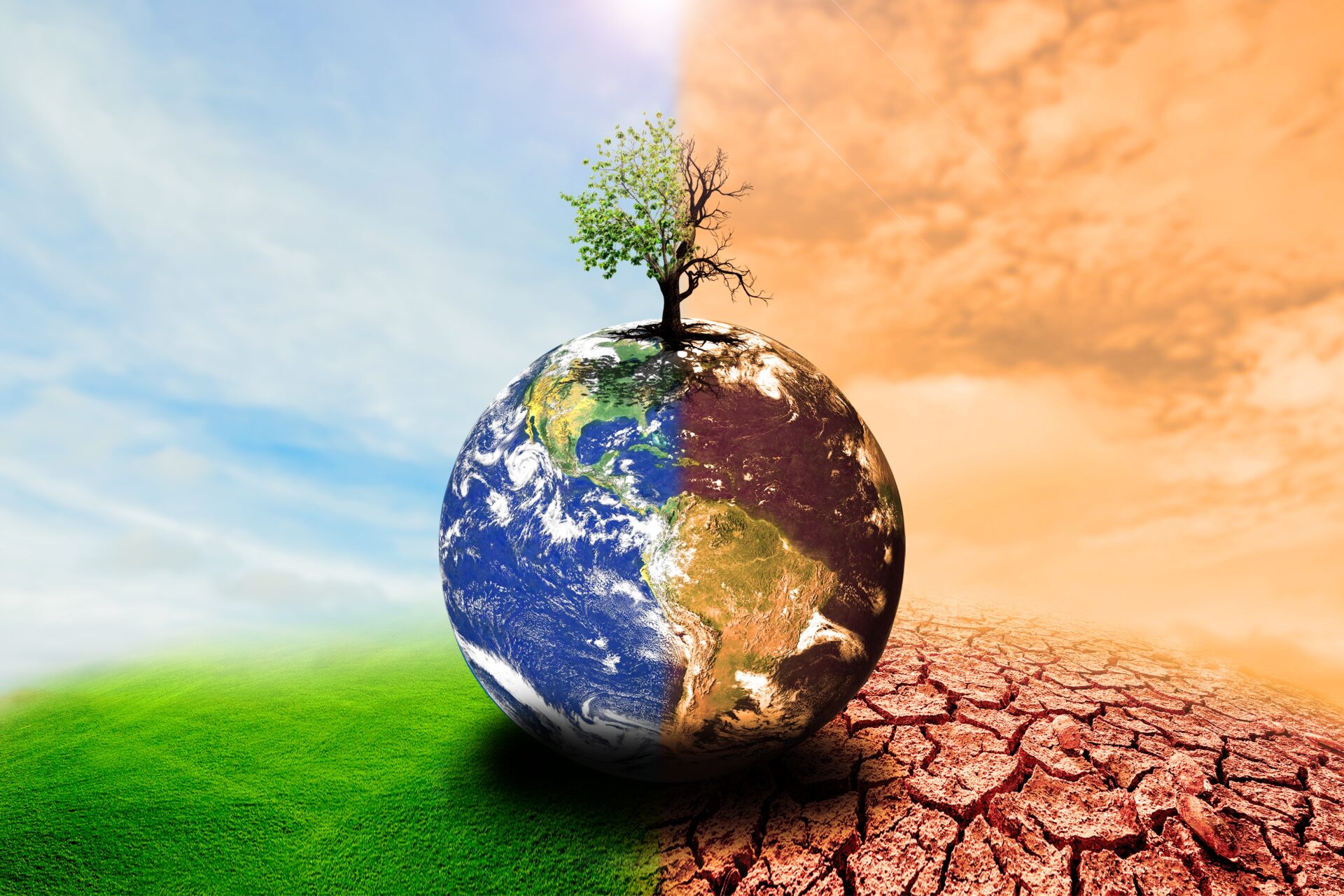On 27. October 2022, the 13th United Nations Environment Programme Emissions Gap report was published[1]. The report concludes that the goals for reducing greenhouse gas emission are not likely to be met and that the average temperature will rise by more than 2.6 degrees centigrade by 2100.
The United Nations Secretary-General stated in the light of the report’s publication that “Droughts, floods, storms and wildfires are devastating lives and livelihoods across the globe. Loss and damage from the climate emergency is getting worse by the day.”[2] It is expected that the increase in the average temperature will lead to even more frequent and extreme weather events. These extreme weather events will not respect national borders and they will affect multiple countries.
This has been experienced this summer with record temperatures all across Europe and the globe leading to crises, such as draughts, extreme hailstorms[3] and wildfires[4] also affecting many popular tourist destinations endangering not only the local population but national and international tourists as well. In Norway “Hans” has led to strong floods causing disruptions all over the country. Responding to such extreme weather events, requires procedures to be in place for an effective response, mitigation and minimization of the impact on life, property, and the environment. Even if these events only affect one country, the large scale of these events may require the assistants from foreign emergency services, as for example the wildfires in Greece, where aid was sent from multiple countries, such as Bulgaria, Romania, Serbia, Slovakia, and Poland.[5]
Extreme weather events can damage industrial facilities and critical infrastructure. For example, in the wildfires in Greece an ammunition depot caught fire and led to several explosions.[6] For these reasons, it is important that not only public bodies, but also relevant industrial and critical infrastructure stakeholders are prepared to handle these types of crises. Cooperation with and coordination of all relevant stakeholders are required. Plans for emergency preparation and handling need to be adapted and aligned with the regional, national and international neighbours’ emergency plans to ensure the plans’ effectiveness and interoperability during large crisis events.
Two main challenges exist with respect to cooperation and coordination of different actors, especially international stakeholders. Firstly, lack of standardization of emergency response plans may inhibit their effectiveness, leading to lack of coordination and resulting in information deficiencies between agencies and first responders.[7] Especially communication of how and which plan to execute may be inhibited, as well as the planning and coordination of resources and personnel. A thorough response plan based on a common standard will also contribute to timely measures, such as evacuations. Standardized emergency response plans will also contribute to coordinated training efforts, as the responses themselves can be standardized across organizations.
The STRATEGY project
The STRATEGY[8] project (facilitating EU pre-Standardisation process Through stReamlining and vAlidating inTeroperability in systems and procEdures involved in the crisis manaGement cYcle) has identified several gaps regarding the response planning and crises management spanning over several regions and countries. The major standardization gaps identified through the STRATEGY project are[9]:
- Missing standards for interagency frameworks that facilitate interoperability and enhance synergies between organizations and cross-border cooperation.
- Standards that provide organizations with means to align their procedures with their capabilities and resources.
- There are no standards for interorganizational and international communication platforms that facilitate the exchange of emergency response plans and in case of applying these plans to coordinate responses between the different organizations.
Secondly, the standardization process for creating these standards and finding consensus is not optimal. Standardizing processes, interfaces, trainings, early warning systems, data exchange protocols, etc. are long-lasting efforts requiring consensus of several stakeholders. The average development time for a European Standard is about 2,6 years. This is where the so-called pre-standardization process comes into play. A CEN Workshop Agreement (CWA) is a product of such a process, which on average takes about 1 year. The speedier process is an advantage, but there are some cons as well, e.g., the thoroughness of the process. To counter for this, the STRATEGY project has utilized the ResiStand Assessment Framework (RAF) tool from a previous EU project in developing the CWA pre-standards. In total more than 10 pre-standards have been developed and several more standardization processes have been started.
STRATEGY has contributed to standardization and interoperability in crises management. The proposed approach to an efficient pre-standardization process has been tested on 13 standardization items. These standardization items address some of the gaps identified in STRATEGY and were tested in eight discussion-based tabletop exercises and one large full-scale exercise in Italy, demonstrating the standards’ usefulness in crisis management, i.e., flood event and a fire in a hazardous waste storage site.
STRATEGY has prepared the further path for standardization and interoperability in crises management. Now it is time to act and build on the work. Together we can use our strengths to prepare for future extreme weather crises and resulting accidents.
References
[1] UNEP Emissions Gap Report 2022, https://www.unep.org/resources/emissions-gap-report-2022
[2] Secretary-General’s video message on the Release of the United Nations Environment Programme Emissions Gap Report, 27. October 2022, https://www.un.org/sg/en/content/sg/statement/2022-10-27/secretary-generals-video-message-the-release-of-the-united-nations-environment-programme-emissions-gap-report
[3] https://www.euronews.com/2023/07/21/from-heatwaves-to-hailstorms-italy-is-blowing-hot-and-cold
[4] https://www.theguardian.com/world/2023/jul/25/how-bad-are-wildfires-in-greece-what-caused-them-visual-guide-heatwave
[5] https://civil-protection-humanitarian-aid.ec.europa.eu/news-stories/stories/its-war-against-fire-greece-not-alone_en
[6] https://www.politico.eu/article/greece-wildfire-explosions-ammo-warehouse/
[7] Standardizing Your Emergency Response Protocol for Increased Efficiency, 2021, https://www.juvare.com/blog/emergency-response/standardizing-your-emergency-response-protocol-for-increased-efficiency/#:~:text=Standardization%20of%20Emergency%20Response%20Protocol,and%20better%20allocation%20of%20resources
[8] https://strategy-project.eu/
[9] G. Sakkas, I. Tsaloukidis, D. Kazantzidou-Firtinidou, V. Pelekanou, C. Papathanasiou, V.Varela, K. Kadena, P. Woitsch, K. Oien, N. Katsoulakos, A. Altenpohl, L. K. Filzmaier, O. Radchuk, J. Kalli, A. M. Mariblanca, S. Stomff, C. Popa, F. Gothe (SIS), W. Antunes, E. Reuge, J. Philpot, 2020, D1.1 Standardisation Landscape: Gaps and Opportunities.













Comments
No comments yet. Be the first to comment!